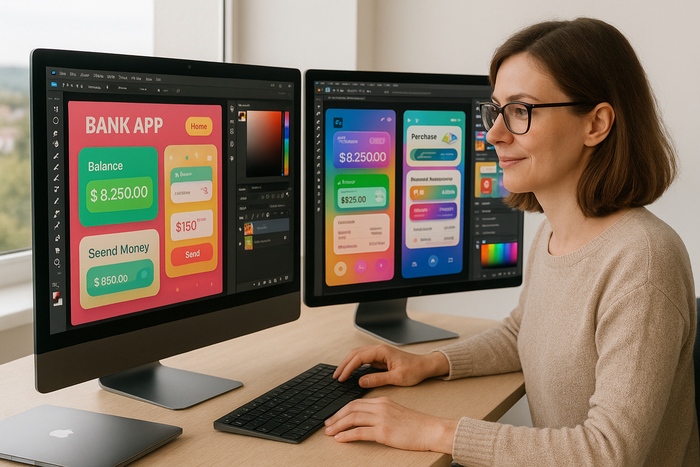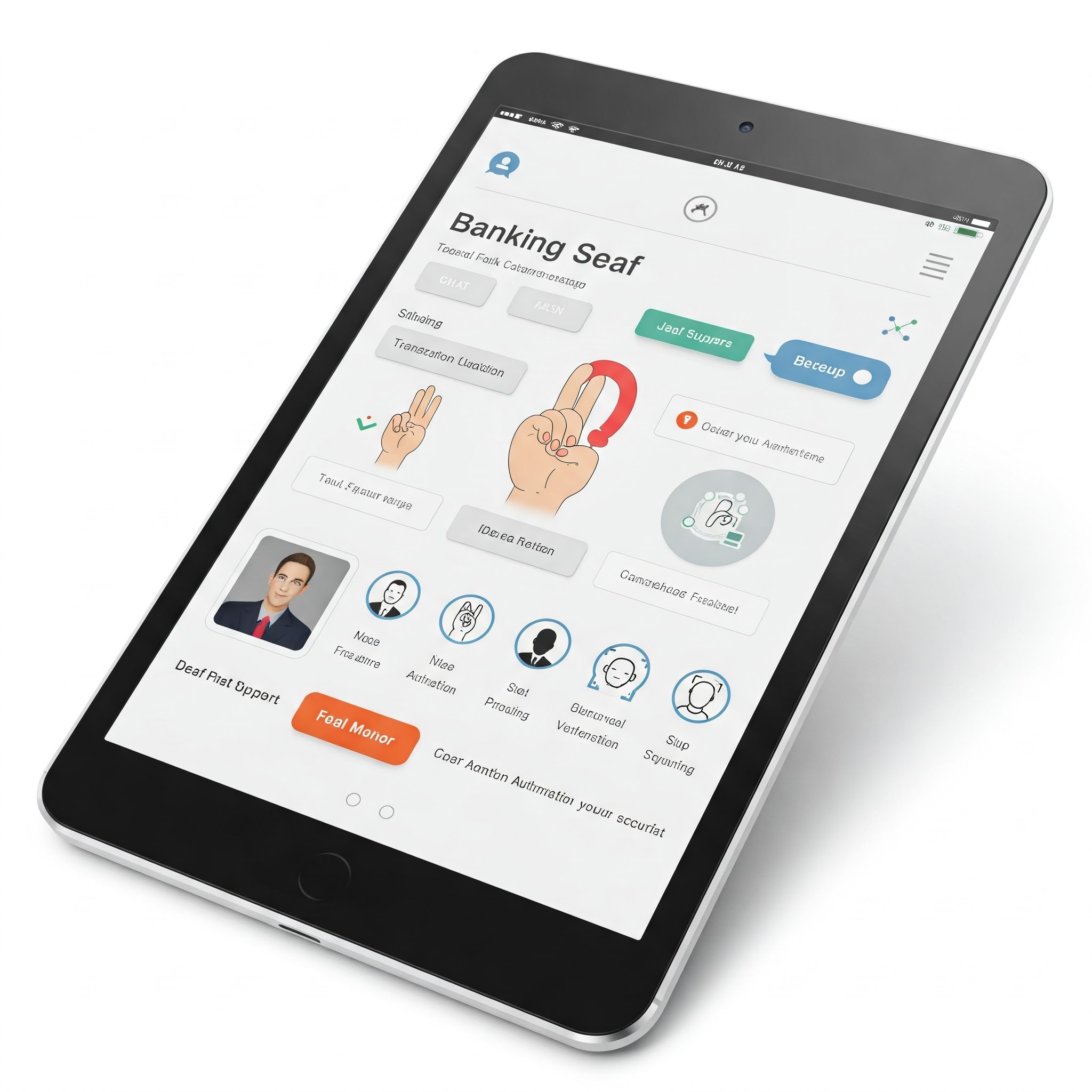The Importance of Accessibility in UX Design for Banking Applications
 As digital platforms become increasingly central to our daily lives, ensuring accessibility in user experience (UX) design is not just beneficial but essential. According to a 2011 report by the World Health Organization and World Bank, approximately 15% of the global population- about one in six people- experience a significant or temporary disability in their lifetime. This substantial demographic underscores why accessibility must be a foundational element in designing digital experiences rather than an afterthought.
As digital platforms become increasingly central to our daily lives, ensuring accessibility in user experience (UX) design is not just beneficial but essential. According to a 2011 report by the World Health Organization and World Bank, approximately 15% of the global population- about one in six people- experience a significant or temporary disability in their lifetime. This substantial demographic underscores why accessibility must be a foundational element in designing digital experiences rather than an afterthought.
Understanding Accessibility in UX Design
Accessibility in UX design refers to creating digital products that can be used effectively by everyone, regardless of their abilities or disabilities. It encompasses various aspects such as clear navigation, intuitive design, and adaptability to different user needs. These features not only benefit users with disabilities but also improve usability for all users, contributing to overall satisfaction and engagement with digital products.
For UX designers, embracing an accessibility-first mindset means recognizing that disabilities can be permanent or temporary-ranging from needing glasses to dyslexia to navigating a computer differently after breaking an arm. By designing with these diverse needs in mind, developers create more robust and inclusive applications that serve a broader audience.
Banking Applications: A Critical Case for Accessibility
 Accessibility in UX design refers to creating digital products that can be used effectively by everyone, regardless of their abilities or disabilities. It encompasses various aspects such as clear navigation, intuitive design, and adaptability to different user needs. These features not only benefit users with disabilities but also improve usability for all users, contributing to overall satisfaction and engagement with digital products. For UX designers, embracing an accessibility-first mindset means recognizing that disabilities can be permanent or temporary-ranging from needing glasses to dyslexia to navigating a computer differently after breaking an arm. By designing with these diverse needs in mind, developers create more robust and inclusive applications that serve a broader audience.
Accessibility in UX design refers to creating digital products that can be used effectively by everyone, regardless of their abilities or disabilities. It encompasses various aspects such as clear navigation, intuitive design, and adaptability to different user needs. These features not only benefit users with disabilities but also improve usability for all users, contributing to overall satisfaction and engagement with digital products. For UX designers, embracing an accessibility-first mindset means recognizing that disabilities can be permanent or temporary-ranging from needing glasses to dyslexia to navigating a computer differently after breaking an arm. By designing with these diverse needs in mind, developers create more robust and inclusive applications that serve a broader audience.
Banking applications represent one of the most critical areas where accessibility directly impacts independence and quality of life. For blind users, digital accessibility in online banking is paramount. Once they can manage their finances online, they can enjoy greater autonomy in all aspects of life. Similarly, for deaf individuals, features like audio prompts and voice recognition systems can become barriers rather than helpful tools if not designed with accessibility in mind.
Challenges for Blind and Visually Impaired Users
 Deaf individuals face unique challenges when accessing financial services. Communication barriers often lead to misunderstandings, errors in transactions, and feelings of exclusion. Banking applications must provide alternatives to audio-based interactions, such as:
Deaf individuals face unique challenges when accessing financial services. Communication barriers often lead to misunderstandings, errors in transactions, and feelings of exclusion. Banking applications must provide alternatives to audio-based interactions, such as:
For blind users navigating banking applications, screen readers like TalkBack (Android) or VoiceOver (iOS) are essential assistive technologies. However, these tools only work effectively when developers properly implement accessibility features such as:
- Descriptive alternative text for images and icons
- Properly labeled buttons and form fields
- Logical heading structures and navigation patterns
- Clear error messages and feedback mechanisms
A blind banking user shared their experience: "Upon launching the banking website, I immediately began my usual exploration... The site's homepage was relatively simple in design. Properly labeled links or buttons represented action items such as sign-in, open an account, contact help, and report fraud." This demonstrates how thoughtful accessibility implementation creates a smoother experience for visually impaired users.
Addressing Needs of Deaf and Hard-of-Hearing Users
 Deaf individuals face unique challenges when accessing financial services. Communication barriers often lead to misunderstandings, errors in transactions, and feelings of exclusion. Banking applications must provide alternatives to audio-based interactions, such as:
Deaf individuals face unique challenges when accessing financial services. Communication barriers often lead to misunderstandings, errors in transactions, and feelings of exclusion. Banking applications must provide alternatives to audio-based interactions, such as:
- Text-based chat support options
- Visual notifications and alerts
- Captioned video tutorials and instructions
- Alternative authentication methods beyond voice recognition
Best Practices for Accessible Banking Applications
Financial institutions are increasingly recognizing the importance of accessibility. The National Australia Bank (NAB), for example, has made its mobile app compatible with various assistive technologies, including adjustable text sizing, high contrast options, and screen reader compatibility. Similarly, NatWest follows the Web Content Accessibility Guidelines (WCAG) to ensure its customer journeys are accessible by design. Key principles for developing accessible banking applications include:
1. Design for Vision Accessibility
- Ensure contrast between background and text is at least 4.5:1
- Use a 3:1 ratio between surfaces and non-text elements
- Specify font size in scalable pixels (sp) with body text no smaller than 12 sp
- Implement Material's Accessible color system for better tonal palettes
2. Ensure Flexible Interaction Methods
- Provide alternative forms of interaction for users with restricted movements
- Ensure clickable elements are properly sized for easy interaction
- Avoid relying solely on gestures like dragging that some users find difficult
- Support keyboard navigation and speech recognition software
3. Follow Established Standards
The financial industry is increasingly adopting the Web Content Accessibility Guidelines (WCAG) 2.1 or 2.2, with Level AA compliance becoming the standard expectation. These guidelines provide comprehensive direction for making web content accessible to people with a wide range of disabilities.
Conclusion
Prioritizing accessibility in UX design for banking applications is not merely about compliance with regulations's about creating truly inclusive digital spaces that serve all users equally. As the Australian Banking Association's Accessibility and Inclusion Principles state, banks should "make apps accessible in a consistent way for users' perception, operation and understanding".
By designing with accessibility at the forefront, developers ensure that essential financial services remain available to everyone, regardless of their abilities. This approach not only broadens the user base but also enhances the overall user experience, promotes inclusivity, and ultimately leads to more effective and successful digital products.